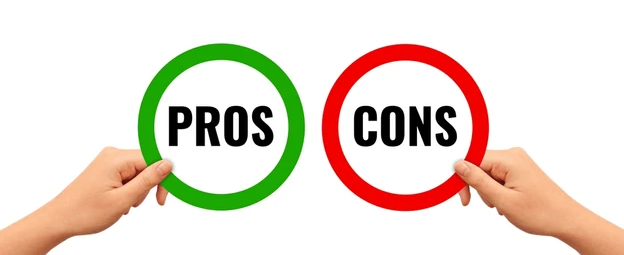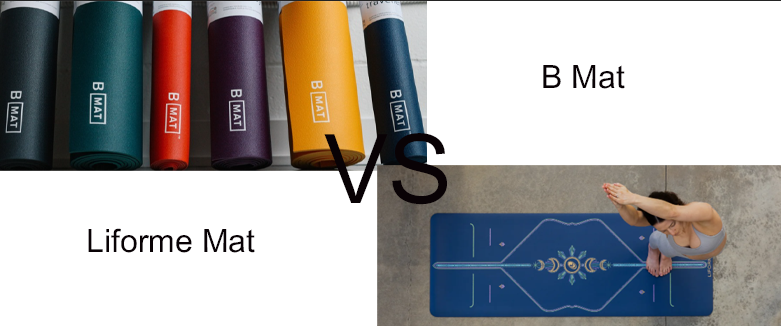Choosing the right yoga mat can transform your practice. Two premium options top the charts: B Mat and Liforme. Yogis worldwide praise both mats. But they serve different needs and preferences.
B Mat is known for its functional design and exceptional grip. It’s built for practitioners who want stability and sweat resistance during intense flows or hot yoga sessions. The mat gives you a simple approach—grippy, durable, and effective.
Liforme offers a more luxurious experience. It’s famous for its alignment system and eco-conscious materials. The mat appeals to yogis who seek precision and care about the environment. It combines comfort with guidance. I’ve noticed it’s popular among beginners and advanced practitioners alike.

Why This Comparison Matters
Yoga mats range from cheap to premium prices. I recommend investing in the right one. It saves money and enhances your practice. B Mat and Liforme fall into the premium category. Understanding their differences helps you spend smart.
This review focuses on:
-
Performance: Grip, stability, and how each mat handles sweat
-
Comfort: Cushioning, feel, and joint support during practice
-
Price: Value for money and long-term investment
Do you practice hot yoga, gentle flows, or power vinyasa? This comparison will guide you to the mat that matches your style, budget, and priorities. I’ll show you what makes each mat unique. You’ll discover which one deserves a spot in your yoga routine.
Key Comparison Table
I’ve broken down the main differences between B Mat and Liforme. This table gives you a quick look before we explore each feature.
|
Feature |
B Mat |
Liforme |
|---|---|---|
|
Material |
100% Natural Rubber |
Natural Rubber + PU Top Layer |
|
Grip Performance |
Excellent for both dry & wet hands |
Outstanding — ideal for Hot Yoga |
|
Thickness |
4–6mm |
4.2mm |
|
Eco-Friendly |
Biodegradable |
PVC-Free & Biodegradable |
|
Weight |
Lighter |
Heavier |
|
Price Range |
$80–$100 |
$150–$180 |
What These Numbers Mean for Your Practice
Material composition changes your experience. B Mat uses pure natural rubber. You get solid grip and long-lasting quality. Liforme adds a polyurethane top layer to its rubber base. The surface feels softer. It soaks up moisture better.
Grip performance differs between them. B Mat works well in most conditions. Your hands stay secure with dry or sweaty palms. Liforme performs even better. The PU layer soaks up moisture. Hot yoga practitioners see this right away.
Thickness options affect your joint comfort. B Mat offers 4mm, 5mm, and 6mm versions. You pick based on how much cushioning you need. Liforme comes in 4.2mm only. It offers stability and protection.
Price difference is big. You’ll pay $80–$100 for B Mat. Liforme costs $150–$180. That’s almost double. Liforme charges more for its alignment system and premium materials. B Mat keeps things simple and focuses on performance.
Which Specifications Matter Most
Think about your practice style. Do you sweat a lot? I suggest Liforme’s grip system. It handles moisture better. Do you travel often? I recommend B Mat. Its lighter weight makes travel easier. Are you on a budget? B Mat gives you professional quality at a lower price.
Both mats care for the planet. They break down over time. Neither has harmful PVC. Based on my experience, you make a responsible choice with either mat.
Pros & Cons
I’ve tested both mats. Each has clear strengths and weaknesses. Knowing them helps you choose the right mat.

B Mat: Strengths and Weaknesses
What B Mat Does Well
B Mat delivers solid performance without fancy extras. The grip surprises most users. Your hands and feet stay planted during downward dog or warrior poses. I’ve used mine through sweaty vinyasa flows. It holds firm.
The price point makes sense. You spend $80–$100 and get professional-grade quality. That’s about half what you’d pay for Liforme. Students and budget-minded yogis like this.
Portability stands out. B Mat weighs less than Liforme. Rolling it up and carrying it to class feels easier. I travel with mine often. It fits in my luggage without adding much weight.
The mat is durable and long-lasting. Natural rubber construction means it can handle your practice every day. Many users report their B Mats lasting years without wear.
Where B Mat Falls Short
The rubber smell bothers some people at first. It’s natural rubber, so there’s an earthy scent when new. It fades after a few weeks of use and airing out. But sensitive noses notice it.
B Mat lacks alignment guides. You won’t find printed lines or markers. If you’re learning poses or want visual cues for hand placement, you’re on your own. I’ve seen beginners struggle with this.
The mat offers less cushioning compared to Liforme’s feel. The 4mm version feels firmer underfoot. Your knees might notice during extended floor work. The 6mm option helps, but it adds bulk.
Liforme: Strengths and Weaknesses
What Liforme Does Best

The grip performance leads the market. I’ve practiced hot yoga on Liforme. Even with dripping sweat, my hands don’t slip. The polyurethane top layer absorbs moisture well. This makes it great for Bikram or heated vinyasa classes.
Alignment markers change how you practice. The “AlignForMe” system shows you where to place hands and feet. Lines help you maintain symmetry. I’ve seen beginners improve their form faster with these guides. People with more experience use them to refine transitions.
The mat feels premium and luxurious. You notice the quality as soon as you unroll it. The surface is softer than B Mat. It cushions your joints better. Long practices feel more comfortable.
Liforme cares about environmental responsibility. The materials break down naturally and contain no PVC. The company uses green production methods. Yogis who care about sustainability like this.
Where Liforme Falls Short
The price creates a barrier. At $150–$180, it’s a big investment. Not everyone can spend that much on a yoga mat. People on a budget often choose other mats.
Weight becomes an issue for travelers. Liforme is heavier than B Mat. Carrying it to and from classes requires more effort. Packing it for trips takes up luggage space and weight allowance.
Some users report the mat being too grippy at first. Your hands can drag or stick during transitions. It takes adjustment if you’re used to slicker surfaces. The grip loosens a bit after you break it in.
The single thickness option limits choices. Liforme comes in 4.2mm. You can’t go thicker for extra cushioning or thinner for better ground connection. B Mat offers 4mm, 5mm, and 6mm versions.
Side-by-Side Pros and Cons Summary
B Mat Advantages:

– Great grip for dry and somewhat wet conditions
– Costs $80–$100
– Light and easy to travel with
– Multiple thickness options (4mm, 5mm, 6mm)
– Durable natural rubber construction
– Good value for money
B Mat Disadvantages:
– Rubber smell at first that needs airing out
– No alignment system or visual guides
– Firmer feel compared to Liforme
– Less effective in very sweaty conditions
Liforme Advantages:
– Superior grip for hot yoga and sweaty practices
– Smart alignment markers for better form
– Luxurious, cushioned feel
– Great moisture absorption with PU top layer
– Strong green credentials
– Premium quality materials and construction
Liforme Disadvantages:
– High price at $150–$180
– Heavier weight makes travel harder
– Available in one thickness (4.2mm)
– Can feel too sticky during break-in period
– Requires larger budget commitment
Which Drawbacks Matter to You
Think about your deal-breakers. Can you handle a rubber smell for a few weeks? B Mat works fine. Need alignment help? Liforme’s system guides you. Practice hot yoga often? Liforme’s grip justifies the cost. Travel each week? B Mat’s lighter weight saves hassle.
Both mats have compromises. Neither is perfect for everyone. I suggest matching the weaknesses to what bothers you least. Match the strengths to what matters most in your practice.
FDM Yoga Recommendation
Looking for factory-direct pricing with custom designs? FDM Yoga offers a smart alternative to retail brands like B Mat and Liforme.
FDM specializes in OEM and ODM yoga mat manufacturing. They produce earth-friendly mats using TPE and natural rubber materials. You get the same quality standards as premium brands. But you skip the retail markup.

Why I Recommend FDM Yoga for Your Mat Needs
Custom Design Flexibility
FDM lets you personalize every detail. You can add your logo. You can choose custom patterns. You can select specific colors. You can design unique packaging. This matters if you run a yoga studio or fitness brand. Your mats become part of your brand identity.
I’ve seen yoga teachers create signature mats for their students. Studios order branded yoga mats that match their space. I like how the customization options give you creative control.
Direct Factory Pricing
You pay manufacturer prices instead of retail. This means big savings compared to B Mat’s $80–$100 or Liforme’s $150–$180 price tags. Bulk orders reduce the per-unit cost even more.
The price advantage works well for:
– Yoga studio owners buying mats for rental or retail
– Fitness brands launching their own mat line
– Wholesale buyers who distribute to multiple locations
– Teachers offering branded mats to their community
Material Quality Options
FDM offers two main material choices:
TPE (Thermoplastic Elastomer) Mats
– Lightweight and portable
– PVC-free and recyclable
– Good grip for general practice
– Easy on your wallet
– Great for beginners or resale
Natural Rubber Mats
– Similar material to B Mat and Liforme
– Excellent grip and durability
– Breaks down naturally and eco-conscious
– Premium feel and performance
– Matches high-end retail mats
Who Benefits Most from FDM Yoga
Yoga Studio Owners
You need multiple mats for students. Buying retail brands gets expensive fast. FDM delivers yoga mat bulk orders at wholesale prices. You can brand the mats with your studio logo. Students see your brand during every class.
Fitness Entrepreneurs
I suggest FDM if you’re starting a yoga product line. The initial investment stays low. FDM handles manufacturing while you focus on marketing. You set your own retail price. The margin between factory cost and retail price becomes your profit.
Wholesale Distributors
You source quality products for retail partners. FDM provides consistent manufacturing. They offer flexible order quantities. Custom packaging makes the mats shelf-ready for stores.
Corporate Wellness Programs
Companies buying mats for employee wellness get bulk pricing. Custom branding reinforces company culture. FDM ships large orders fast.
Making the Right Choice for Your Situation
Choose B Mat or Liforme if:
– You need one mat for personal practice
– You want immediate purchase and delivery
– Brand reputation matters to you
– You prefer established retail products
Choose FDM Yoga if:
– You’re buying multiple mats for a studio or business
– Custom branding adds value to your offering
– You want to create your own yoga product line
– Direct factory pricing fits your budget better
– You have flexibility on order timing and quantities
Summary
I’ve practiced on both mats for years. B Mat gives you 90% of Liforme’s performance at 50% of the cost. Liforme delivers that extra 10%. It does this through better grip and alignment features. That 10% matters a lot if you practice hot yoga or value precision guidance.
Your practice tells you which mat to buy. Do you do hot yoga three times per week? I suggest Liforme for sweat handling. Do you mix classes and travel? B Mat’s versatility and portability win. Are you running a studio? FDM’s bulk pricing makes business sense.
Both B Mat and Liforme outlast cheaper mats. You invest once and practice for years. The right choice depends less on which mat is “better.” It depends more on which mat fits your specific yoga journey.

